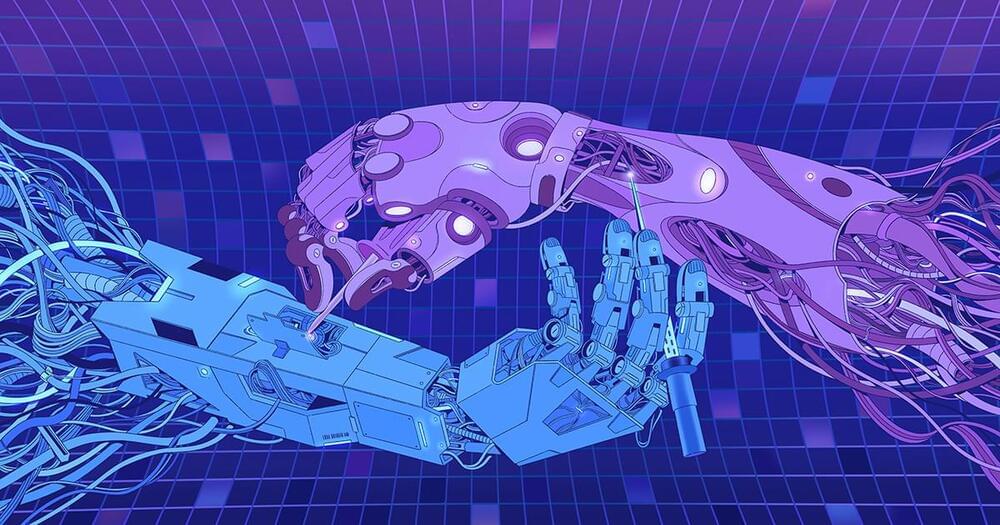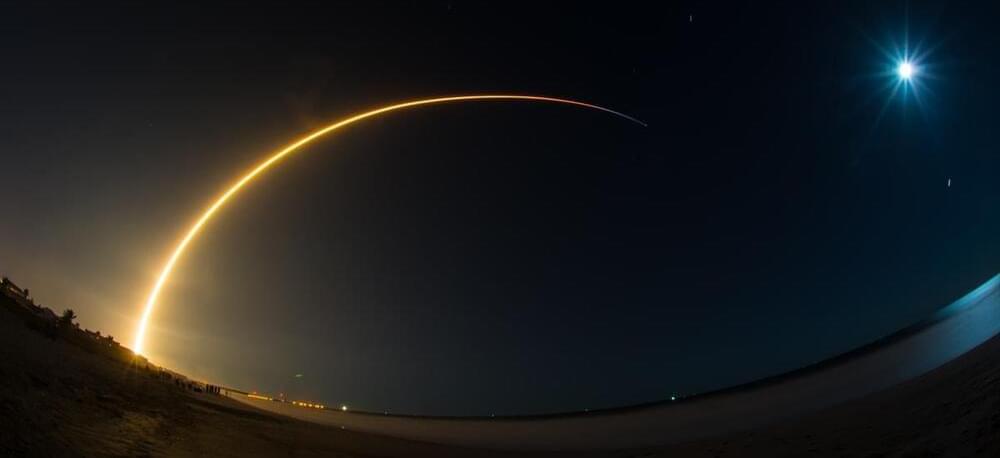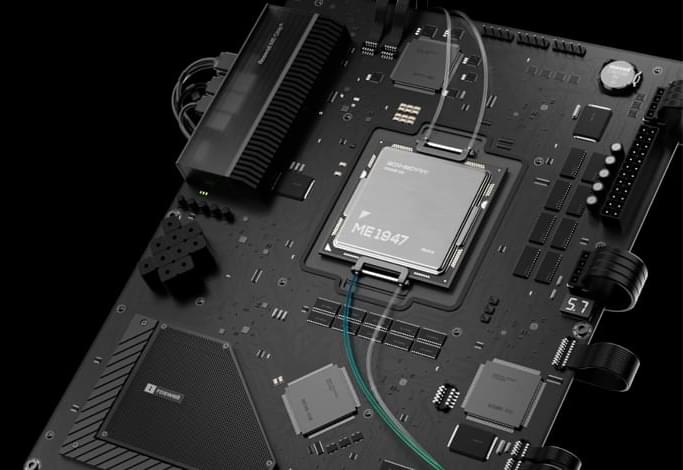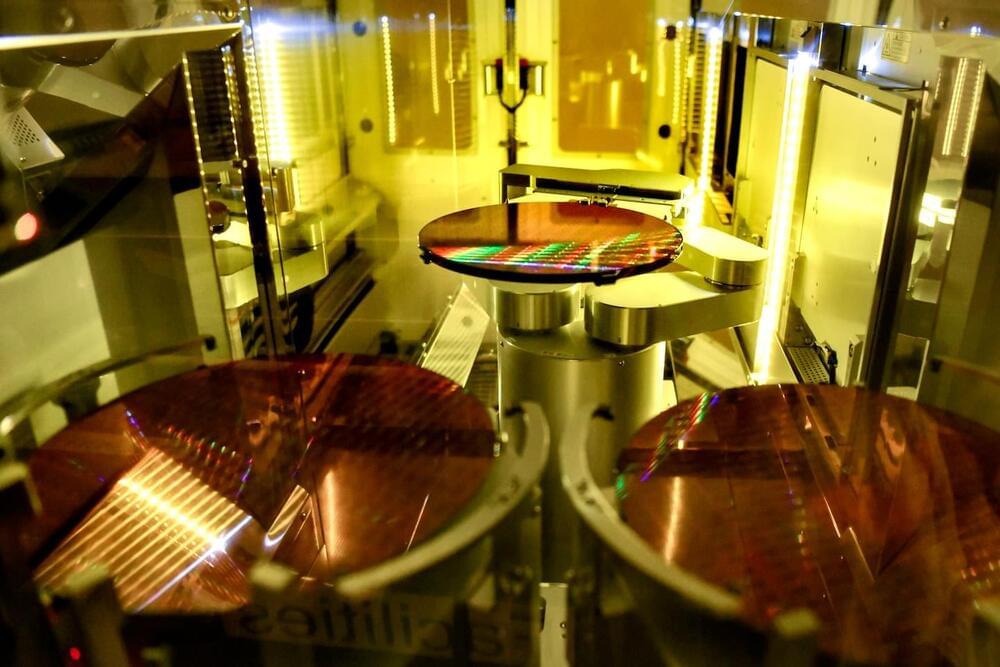By using hypernetworks, researchers can now preemptively fine-tune artificial neural networks, saving some of the time and expense of training.
Page 5643
Jan 25, 2022
Why SpaceX crashing into the Moon could actually be good for science
Posted by Atanas Atanasov in categories: science, space travel
SpaceX launched a Falcon 9 rocket back in 2015, and its second stage is on course to hit the Moon. The DSCOVR craft stage could send up lunar regolith.
Jan 25, 2022
First molecular electronics chip
Posted by Future Timeline in categories: biotech/medical, computing
A new biosensor chip can observe direct electrical measurements of single-molecule interactions. This could enable faster and cheaper DNA sequencing, disease surveillance, and precision medicine on portable devices.
Circa 2019
Annually for three years, The Lemelson Foundation will give $100 awards to outstanding inventors in up to 270 Society Affiliate Fairs with middle school participants around the country. The prize was specially created to reward young people whose projects exemplify the ideals of inventive thinking by identifying a challenge in their community and creating solutions that will improve lives.
Invasive algae are often found in bodies of water such as lakes and ponds, but can it be used as paper? Seventh-graders, Wyatt Vick and Charley Clyne, from Zane Trace Middle School in Chillicothe, Ohio, set out to answer that question with their project, “Algae Paper,” eventually earning them the Lemelson Early Inventor Prize.
Jan 25, 2022
Astronomers Find the Biggest Structure in the Milky Way: Filament of Hydrogen 3,900 Light-Years Long
Posted by Genevieve Klien in categories: evolution, particle physics, space

Roughly 13.8 billion years ago, our Universe was born in a massive explosion that gave rise to the first subatomic particles and the laws of physics as we know them. About 370,000 years later, hydrogen had formed, the building block of stars, which fuse hydrogen and helium in their interiors to create all the heavier elements. While hydrogen remains the most pervasive element in the Universe, it can be difficult to detect individual clouds of hydrogen gas in the interstellar medium (ISM).
This makes it difficult to research the early phases of star formation, which would offer clues about the evolution of galaxies and the cosmos. An international team led by astronomers from the Max Planck Institute of Astronomy (MPIA) recently noticed a massive filament of atomic hydrogen gas in our galaxy. This structure, named “Maggie,” is located about 55,000 light-years away (on the other side of the Milky Way) and is one of the longest structures ever observed in our galaxy.
Jan 25, 2022
Manufacturers have less than five days’ supply of some computer chips, Commerce Department says
Posted by Genevieve Klien in category: computing
A new Commerce Department report highlighted the severity of a global shortage that has hobbled manufacturing and fueled inflation for more than a year, and that defies easy solutions.
Jan 25, 2022
Tesla appears to be finally adding a regular horn to its yoke steering wheel
Posted by Shubham Ghosh Roy in categories: sustainability, transportation
Tesla appears to have finally agreed to walk back one feature of its controversial yoke steering wheel, as it will now provide a regular horn.
When Tesla unveiled the new Model S with the “yoke” butterfly steering wheel, it was controversial. Some were worried about the actual shape of the wheel being problematic, while others were concerned about the lack of drive stalk to choose the drive mode.
As for the former, we thought that the automaker wouldn’t risk bringing the controversial yoke steering wheel to market without a nonlinear steering curve enabled by a steer-by-wire system – especially knowing that Tesla has been developing a steer-by-wire system.
Jan 25, 2022
Diesel-Killing Electric Delivery Vans To Help Clean Up Noisy, Smelly E-Commerce Mess
Posted by Shubham Ghosh Roy in categories: energy, transportation
“Penske Truck Leasing and National Grid are among the first companies adding preproduction E-Transit vans to their fleets for a variety of uses, including testing the BlueOval™ Charge Network, America’s largest public charging network, plus depot fleet charging tools that monitor and help manage energy usage,” Ford explained.
Maybe The US Postal Service Will Electrify After All
That brings us to the US Postal Service, owner of a fleet of 231,541 vehicles of various types. USPS expects to roll up to 165,000 new vehicles into the fleet under a 10-year contract signed last spring with the firm Oshkosh Defense, a subsidiary of Oshkosh Corporation.
Jan 25, 2022
Concrete walls frame desert views in remote Chihuahua home
Posted by Shubham Ghosh Roy in categories: habitats, materials
The earthen tone of this off-grid holiday home in Northern Mexico was selected to match the rock formations of the nearby Cumbres de Majalca National Park, which is known for its dramatic landscapes.
OAX Arquitectos completed this remote home as a vacation getaway for a large family. It is located within a national park in Mexico’s Chihuahua State, just south of the American border.
“As part of the development of the park, a section was reserved to house cottages, but because of its remote location lacks services,” said OAX Arquitectos, which is based in Monterey.
Jan 25, 2022
IBM forges entanglement to double quantum simulations
Posted by Genevieve Klien in categories: military, quantum physics
“Entanglement forging essentially enables you to cut up a larger circuit into smaller circuits that we can execute on smaller hardware,” IBM Quantum platform lead Blake Johnson said in a statement.
“Smaller circuits aren’t just easier to execute. They’re also able to tolerate a lot more noise just by virtue of being smaller.”
Meanwhile, progress continues on enlarging quantum systems. IBM’s 27-qubit Falcon processor dates from 2019, and has since been surpassed by larger systems, including IBM’s own 127-qubit Eagle last year. As detailed at the time, IBM intends to use that design to scale to a 433-qubit processor called Osprey this year, and a 1,121-qubit processed called Condor in 2023.
















